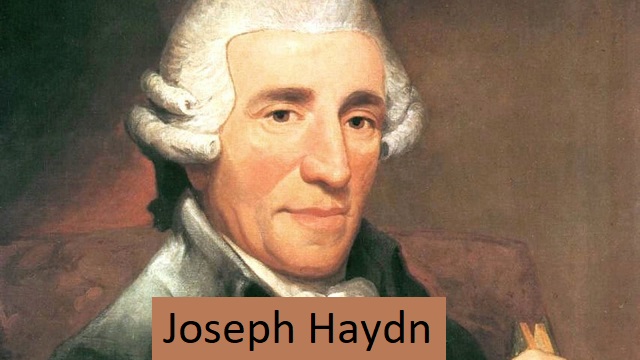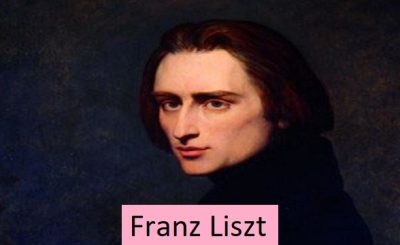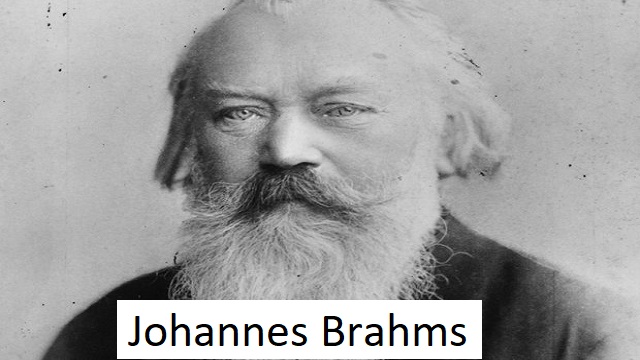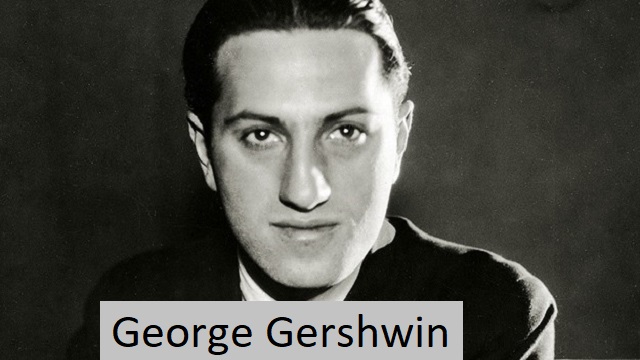Joseph Haydn, complete Franz Joseph Haydn, (born March 31, 1732, Rohrau, Austria – died May 31, 1809, Vienna), Austrian composer who was one of the most important figures in the development of the classical musical style during the 18th century. He helped establish the forms and styles of the string quartet and symphony.

In the early years
Hayden was the second son of humble parents. His father was a wheel writer, his mother, before her marriage, was a cook for the village rajas. Haydn showed unusual musical talent early on, and his cousin, a schoolmaster and choirmaster in nearby Hainburg, offered to take him home and train him. Haydn, who was not yet six, left home and never returned to his parents’ villa except for rare short visits. Young Haydn sang in the church choir, learned to play various instruments and acquired a good basic knowledge of music. However, his life changed dramatically at the age of eight. The music director of St. Stephen’s Cathedral in Vienna had spotted the boy on a visit to Heinburg and invited him to be a cantor in the cathedral of the Austrian capital. Haydn’s parents accepted the offer and in 1740 Haydn moved to Vienna. He spent nine years at a choral school, acquiring a wide working knowledge of music through constant performances, but, to his dismay, had little training in music theory. He had to work hard to fulfill his obligations as a singer and was expelled from the cathedral choir and choir school when his voice changed. 17-year-old Hayden had to fend for himself with little money or possessions. For a while, he takes refuge in the attic of a musician and “unfortunately” supports his eccentricities. At the same time, he embarked on a strenuous self-taught journey through the study of musical works, in particular the works of Carl Philip Emmanuel Bach, and the main manuals of music theory. Fortunately, he caught the attention of Nicola Porpora, an Italian composer and singing teacher, who accepted him as an accompanist for singing lessons and revised Haydn’s compositions. Hayden progressed with perseverance and energy. He was eventually introduced to Karl his Josef von his Forenberg, an Austrian music lover who played chamber music in his house. There he wrote his first string quartet for the instrumentalists.
On Fürnberg’s recommendation, Haydn entered the service of the Bohemian Count Ferdinand Maximilian von Morzin in 1758 as Kapellmeister and chamber music composer. Haydn took over an orchestra of 16 musicians, and for this group he wrote his first symphony, as well as several pieces for wind and string instruments. These early musical compositions still had a conventional character, but a certain freshness of melodic invention and brilliance marked them as the work of a future master.
practice sponsor
Haydn only stayed with von Morzine for a short time, as his patron’s financial problems forced him to disband the orchestra. Soon after, Haydn was invited into the service of Prince Pál Antal Esterházy. The Esterhazy family were one of the wealthiest and most influential families in the Austrian Empire with an excellent record of backing music. Prince Bal Antar performed regularly with a well-equipped orchestra at his castle in Eisenstadt, a small town about 30 miles (48 km) from Vienna. The elderly music director was ill, so in 1761 the prince appointed the relatively unknown Haydn as assistant conductor. While the music director oversaw the church music, Haydn conducted the orchestra, mentored the singers in almost daily rehearsals, and composed most of the music required. He was in charge of the musical staff. Hayden performed his duties, demonstrating sensitivity, good character and skill in dealing with people. In his first symphony, written for Esterházy, Haydn displayed the reliable freshness of his musical ideas, along with his characteristic humor and wit, but his full maturity came much later. His work with the Esterházy family proved crucial to his career and he remained in their service until his death.
In 1766 Haydn became director of music at the court of Esterhazy. He raised the quality and size of the Prince’s orchestras by appointing selected musicians and singers. Prince Miklós, who became head of the Esterhazy family after his brother’s death in 1762, supported his ambitious plans. He was able to appreciate Haydn’s musical contributions and create an atmosphere conducive to the development and maturation of Haydn’s art. In addition to operas for the court, Haydn composed symphonies, string quartets and other chamber music. The prince was passionate about playing the baritone, and Haydn provided his patron with more than 150 compositions on this antique cello-like instrument.
Haydn served Prince Miklos for nearly 30 years. He often visited Vienna in the prince’s retinue, and during these visits a close friendship developed between him and Wolfgang Amadeus Mozart. The two composers felt inspired by each other’s work. Mozart proclaimed that he had learned how to write a quartet from Haydn and dedicated a magnificent collection of six such works to his “dear friend”. Haydn’s music also shows the influence of his young friends. A mature composer was never fixed.
During the 1760s, Haydn’s fame spread across Europe. Austrian and Czech monasteries did much to spread his sacred music as well as his symphonies, recitals, sonatas and concertos. Elite patrons in southern Germany, Italy, and the Austrian Empire eagerly collected his music, and their libraries eventually became important sources for copies of his works.
Joseph Haydn’s English lesson
When Prince Miklos died in 1790, he was succeeded by his son, Prince Antal, who disliked music and dismissed most of the court musicians. However, Hayden was retained and he continued to receive his salary. He wasn’t asked to do any tasks and he allowed Hayden to do whatever he wanted. However, after a long time at the Esterhazy court, the composer was eager to try a different lifestyle. At this point, concert violinist Johann Peter Salomon arrived from England and commissioned Haydn for six new symphonies and twenty minor concertos to be performed by the composer himself Concert cycle for the London Orchestra, edited by Salomon. Haydn gladly accepted the offer and the two left for London in December 1790. On New Year’s Day in 1791, Haydn arrived in England and the next eighteen months proved very fruitful. Many new impressions, meetings with outstanding musicians, the praise he received had a strong influence on his creative work. He was welcomed, treated like a lion, treated like a genius. Charles Burney has published a poem in her honour. The Twelve Symphonies, composed during his first and second visits to London, represent the pinnacle of his orchestral output. Her instrumental virtuosity, command of musical form and flowing melodic inspiration, not to mention her brilliant wit, endeared her to British audiences. Their popularity is reflected in the various nicknames that have been given to them. Examples are The Surprise (#94), Military (#100), The Clock (#101) and Drumroll (#103). In June 1792 he left London for Germany.. During the trip he stopped in Bonn, where he was introduced to 22-year-old Ludwig van Beethoven, and the energetic young composer agreed to move to Vienna to be tutored by Haydn. In 1793, in a letter sent after Cologne, Beethoven’s patron, Haydn wrote, “One day Beethoven will be considered one of the greatest composers in Europe, and I am proud to be called his teacher.” I’m thinking,” he said.
Haydn’s strangely wonderful welcome back to Vienna in 1792 reinforced his decision to make a second trip to England in January 1794. The principal composition of his second visit to London was the Second London Symphony (or Solomon’s). . 99-104) in the Ebony Quartet (nos. 54-59). While in London, Haydn reached even greater heights of inspiration, especially in the last three symphonies he wrote (Nos. 102 to 104). His 102 in B-flat major is the greatest of all symphonies. British audiences no longer saw him as a sensation, but rather as a beloved old friend. King George III urged him to stay in England






